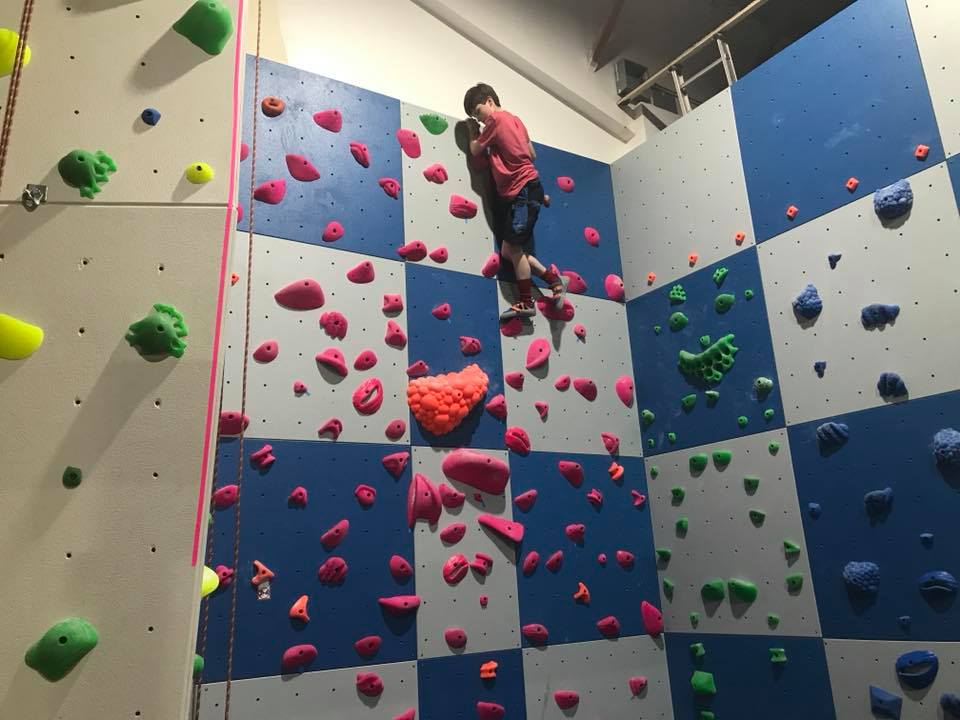Setting Up a Child-Friendly Indoor Climbing Wall For Your School

Children's indoor climbing offers a dynamic solution, blending the excitement of exploration with the benefits of physical exercise.
Whether in a home or school, indoor climbing walls provide an easily accessible experience that provides kids with much more than the development of climbing skills.
The Rising Popularity of Indoor Climbing Walls In Schools
Children's indoor climbing has seen a surge in popularity, emerging as a favored activity for parents and educators alike. This surge is attributed to its unique blend of mental and physical challenges, providing a holistic approach to children's development.
Indoor climbing walls are not just about physical exertion; they are about solving problems, building confidence, and learning persistence.
Why Choose Indoor Climbing for Your Child?
Promotes Physical Health
Climbing is a full-body workout that enhances strength, flexibility, and coordination. Engaging in children's indoor climbing from a young age can set the foundation for a healthy and active lifestyle, combating the sedentary habits that are increasingly common among today's youth.
Boosts Mental and Emotional Well-being
Indoor climbing challenges children to think strategically, develop problem-solving skills, and boost self-esteem through every climb they conquer. The sense of achievement when reaching the top is unparalleled, encouraging a positive mindset and resilience.
Safe and Controlled Environment
Unlike outdoor climbing, an indoor climbing wall setup offers a controlled environment where risks are minimized. This makes children's indoor climbing an ideal starting point for introducing young climbers to the sport, providing a safe space for them to learn and grow.
Setting Up an Indoor Climbing Space for Kids
Assessing the Space
First and foremost, evaluate the available spaces in your home or school. Whether it's a bedroom wall, gymnasium, basement playroom, or even a classroom, ensuring there's enough space for safe climbing and landing is crucial. DIY climbing panels can be installed flush with existing walls minimizing space requirements.
Choosing the Right Equipment
Selecting age-appropriate climbing holds and safety mats is essential. Look for handholds that have designs that are appropriate for children, offering a comfortable grip and size with shapes that are easier to hold onto yet still stimulate their imagination and climbing skills.
Padded flooring for climbing walls ranges from simple, moveable “crash pads” to custom flooring that needs to be installed by a professional. Convenient and inexpensive “flip-up” pads can be folded up and attached to the climbing wall in spaces where the building floor is used for other activities like a basketball court.
Installation Considerations
When installing a children's indoor climbing wall, safety should always be the top priority. Ensure the climbing wall product meets engineering requirements and is installed according to specifications. Consider hiring a professional if you're unsure about the installation process.
Adequate “fall zones” are necessary so that no obstacles are in the way of descent or in case of a fall. Padded flooring needs to be the proper thickness and positioning to match the design of the climbing wall.
Engaging Activities on the Climbing Wall
Climbing Games
Incorporate games into the climbing experience to keep it fun and engaging. From 'Simon Says' with climbing moves to treasure hunts that involve reaching for hidden objects on the wall, the possibilities are vast.
Themed Climbs
Create themed climbing adventures to spark children's imaginations. Whether it's a jungle safari, a space expedition, or a climb up a magical castle, themed climbs can make the experience even more exciting.
Skill-Building Challenges
Set up challenges or routes that encourage children to use different climbing techniques, helping them build their skills progressively. Celebrate their achievements with a small rewards system to keep them motivated.
Climbing Towards a Brighter Future
Children's indoor climbing not only offers a fun and engaging way to stay active but also plays a significant role in the physical, mental, and emotional development of young ones. By setting up a safe and stimulating climbing environment at home, parents can provide their children with an invaluable tool for growth and discovery.
Whether your child is climbing toward the top of a wall or reaching new heights in their personal development, indoor climbing is a journey filled with endless rewards.
FAQ on Child-Friendly Indoor Climbing Walls
What age is appropriate for children to start indoor climbing?
Children as young as three years old can start experiencing indoor climbing under proper supervision. However, the appropriate age can vary depending on the child's physical ability, interest, and maturity to follow safety instructions. It's essential to choose climbing equipment and activities that are suitable for their age and skill level.
How do I ensure the safety of my child on an indoor climbing wall?
Safety in children's indoor climbing involves several steps:
- Use age-appropriate climbing holds and ensure they're securely installed.
- Ensure adequate “fall zones” are designed into the climbing area.
- Install proper flooring, such as crash mats or padded flooring, to cushion falls.
- Regularly inspect the climbing wall and holds for any signs of wear or damage.
- Supervise children at all times when they are using the climbing wall.
- Teach children basic safety rules and climbing techniques before they start.
Can indoor climbing walls fit in a small home or apartment?
Yes, indoor climbing walls can be adapted to fit small spaces. Modular panels and smaller climbing setups are available and can be customized to utilize limited areas efficiently. When considering the space for a small climbing wall, don’t forget to factor in the landing area or “fall zone.”
How can I make indoor climbing engaging for my child?
Keep indoor climbing fun and engaging by:
- Rotating and changing the climbing holds to create new routes and challenges.
- Incorporating climbing games and themed climbs to spark their imagination.
- Setting goals and celebrating achievements to motivate them.
- Encouraging social climbing sessions with friends or siblings under supervision.
What are the long-term benefits of indoor climbing for children?
Indoor climbing offers numerous long-term benefits for children, including:
- Improved physical strength, flexibility, and coordination.
- Enhanced problem-solving skills and creativity.
- Increased self-esteem and confidence from overcoming challenges.
- The development of perseverance and goal-setting skills.
- A healthy, active lifestyle that can carry into adulthood.



